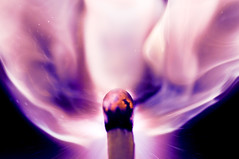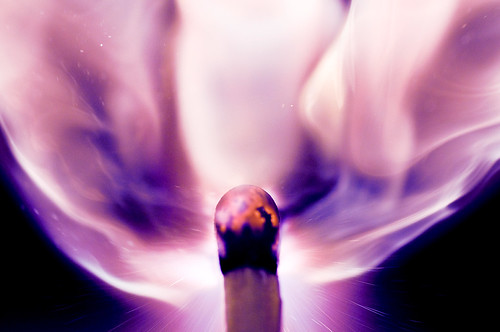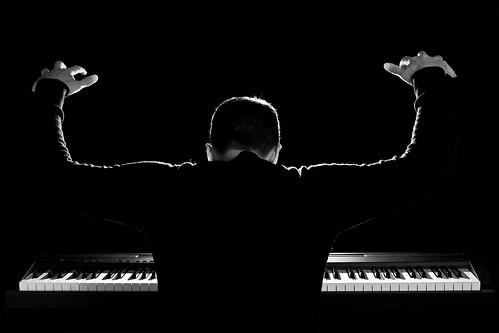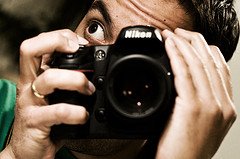
"High ISO" was the title of the assignment at dps this week.
I wanted to shoot a subject where high ISO was actually needed, rather than just shooting something randomly at high ISO. Action photography is a field where high ISO is crucial. It's a low-light situation where addidontal lighting is difficult/impossible and the scene consist of moving subjects that you want to freeze. In the lack of local football matches this week, I decided to shoot an igniting match instead (pun intended). I have done that earlier, but wanted to shoot it differently this time.
Setup
I placed a non-flameable plate on the kitchen table. On top of this one, two pieces of styrofoam. I put a match in each of the styrofoam stumps so that the matches pointed at each other. I recently discovered that when the matches are placed like this, the flame is controllable to a certain degree (less luck is needed). This way the flame goes more to the sides and upwards rather than all directions at once, which was the case in my last match picture.
The camera was placed as close as possible to avoid unnecessary cropping in post-processing.
Exposure
Since the assignment said "High ISO" I had no other choice than setting the ISO to next to maximum, which is 1600 on the Nikon D300. Based on the the settings in the previous match picture, I ended up with the following exposure:
Exposure: 1/8000 sec @ f/10, ISO1600
Lens: Tamron 90mm f/2.8 macro
Camera: Nikon D300
Shooting and post-processing
I used the cable remote for the shooting. The camera was set to burst mode. I focused manually on the middle of the two matches so that most of the flame would be in focus and to avoid focus delay during the shooting. With the cable remote ready, I lit a third match and moved it slowly upwards below the two matches. The moment before they were ignited I pressed the shutter and kept it down until the flame was normal. I repeated this for about two hours, resulting in 350 useless RAW-files. Things are happening so fast during the ignition of a match, that even 6 fps on the D300 are way too slow to catch all the action. But finally, a pleasing picture appeared on the LCD-screen. This picture was quite different than all the other attempts.
The SOOC RAW-file:
The match itself is quite blurry. That was because I focuses in the middle of the matches. Shooting this close to the subject will give an extremely narrow depth of field, even at f/10. But I thought that the main subject is the flame, and not the match itself, so I approved this photo for further processing.
In Photoshop I used the selective coloring tool to give reds a pinkish hue, while making the yellows a little cooler. Then I converted the picture to LAB mode and boosted the colors using this tutorial on dps.
The result:










